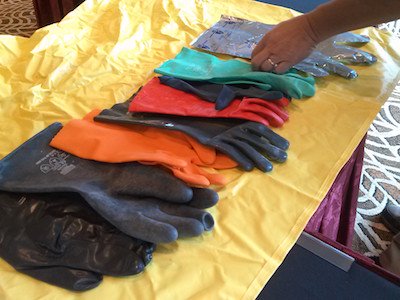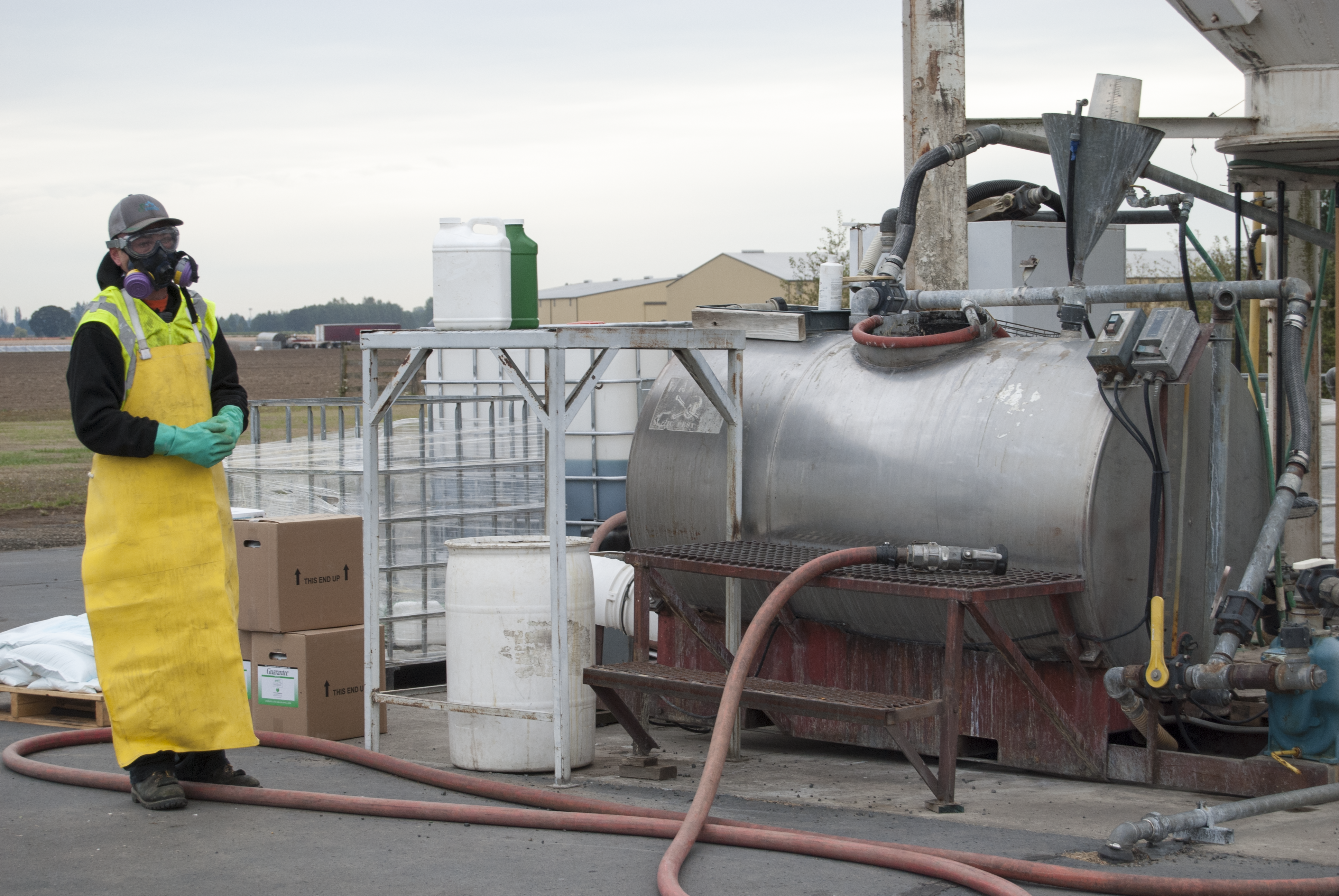CFR §170.305: PPE means devices and apparel that are worn to protect the body from contact with pesticides or pesticide residues, including, but not limited to, coveralls, chemical-resistant suits, chemical-resistant gloves, chemical-resistant footwear, respirators, chemical-resistant aprons, chemical-resistant headgear, and protective eyewear.
A pesticide product label often requires shirt, pants, shoes, and socks. They are not considered PPE under the law.
More detailed information is available here.
PPE Terminology
For clarification, the following terms are interpreted as to their meaning for PPE when required by pesticide product labeling:
- Chemical-resistant PPE
- Chemical-resistant apron
- Chemical-resistant footwear
- Chemical-resistant headgear
- Chemical-resistant suit
- Coveralls
- Gloves
- Protective eyewear
- Waterproof
Chemical-resistant PPE must be made of material that allows no measurable movement of the pesticide being used through the material during use.
Chemical-resistant apron must be a chemical-resistant apron that covers the front of the body from mid-chest to the knees.
Chemical-resistant footwear means one of the following types of footwear must be worn:
- Chemical-resistant shoes
- Chemical-resistant boots
- Chemical-resistant shoe coverings worn over shoes or boots
Chemical-resistant headgear must be either a chemical-resistant hood or a chemical-resistant hat with a wide brim.
Chemical-resistant suit must be a loose-fitting, one- or two-piece chemical-resistant garment that covers, at a minimum, the entire body except head, hands, and feet.
Coveralls must be loose-fitting, one- or two-piece garments that cover, at a minimum, the entire body except head, hands, and feet.
- When the pesticide label requires coveralls to be worn, it means cloth garments as described above. They are not required to be chemical-resistant. If full body chemical-resistant protection is required, the label will specify that a handler must wear a chemical-resistant suit instead of coveralls.

Gloves must be the type specified on the pesticide product labeling.
- Gloves made of leather, cotton, or other absorbent materials may not be worn
while performing handler activities unless gloves made of these materials are
listed as acceptable for such use on the pesticide product labeling. - Separable glove liners may be worn beneath chemical-resistant gloves,
unless the pesticide product labeling specifically prohibits their use.
Separable glove liners are defined as separate glove-like hand coverings,
made of lightweight material, with or without fingers. Work gloves made from
lightweight cotton or poly-type material are considered to be glove liners if
worn beneath chemical-resistant gloves. Separable glove liners may not
extend outside the chemical-resistant gloves under which they are worn.
Chemical-resistant gloves with non-separable absorbent lining materials are
prohibited. - If used, separable glove liners must be discarded immediately after a total
of no more than 10 hours of use or within 24 hours of when first put on,
whichever comes first. The liners must be replaced immediately if directly
contacted by pesticide. Used glove liners must not be reused. Contaminated
liners must be disposed of in accordance with any Federal, State, or local
regulations.
View More
View Less
Protective eyewear means one of the following types of eyewear:
- Goggles,
- Face shield,
- Safety glasses with front, brow, and temple protection, or
- Full-face respirator.
Waterproof must be made of material that allows no measurable movement of water or aqueous solutions through the material during use.

Regulatory Guidance
Browse brief guides about protections for workers and handlers, the AEZ, posting, PPE, exemptions, training, respirators, and more, in English and Spanish.
